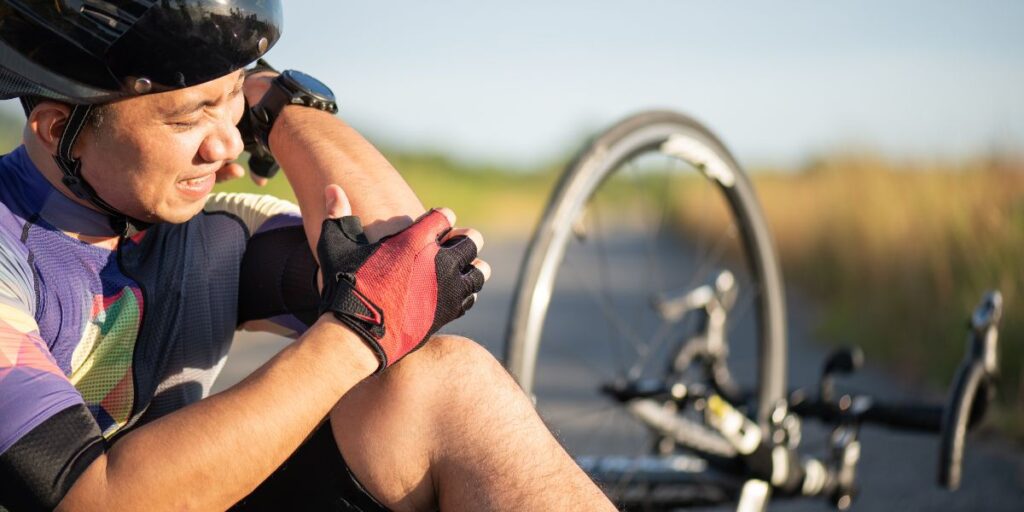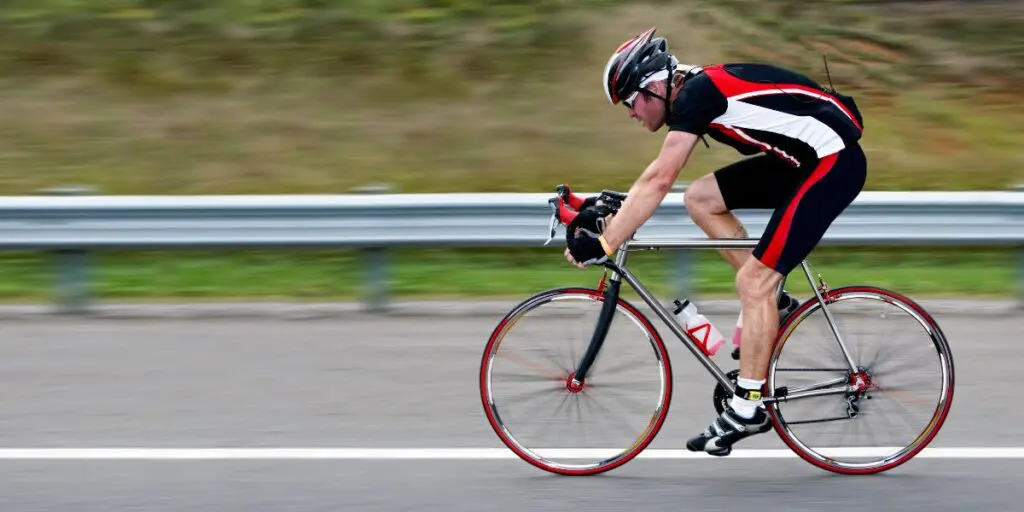Cycling is a popular sport and recreational activity that offers numerous health benefits, including cardiovascular fitness and muscle strengthening. However, for many cyclists, especially those who spend long hours on their bikes, elbow pain can become a significant issue.
Known as “Cyclist’s Elbow” or commonly referred to as “Tennis Elbow,” this condition can be a frustrating obstacle to maintaining an active lifestyle. This article will explore the causes, symptoms, prevention strategies, and treatment options for cycling-related elbow pain, with insights into how physical therapy can help you overcome this discomfort and get back to pain-free cycling.

Understanding Cyclist’s Elbow
Cyclist’s Elbow is a type of repetitive strain injury that affects the tendons around the elbow, particularly the lateral epicondyle, which is the bony bump on the outside of the elbow. This condition is caused by repetitive motion and overuse, which leads to small tears in the tendon that connects the forearm muscles to the elbow joint. While the condition is commonly associated with activities like tennis, it can also be prevalent in cyclists due to the prolonged grip on handlebars and the repetitive strain from arm positioning during rides.
Elbow pain can also result from working at a desk, bench pressing, or performing curling exercises, as these activities can place repetitive strain on the elbow tendons similar to cycling.
Common Symptoms
The symptoms of Cyclist’s Elbow can vary in intensity and may include:
- A burning pain on the outer part of the elbow.
- Pain that radiates down the forearm towards the wrist.
- Swelling or tenderness around the elbow joint.
- Pain that worsens with wrist movements or gripping activities.
- Reduced grip strength.
These symptoms can develop gradually, often starting as a mild discomfort that worsens with continued cycling. Ignoring these symptoms can lead to chronic pain and more severe tendon damage, making early intervention crucial.


Causes of Elbow Pain in Cyclists
Several factors can contribute to the development of elbow pain in cyclists, including:
1. Repetitive Motion
Cycling requires a consistent grip on the handlebars, which places repetitive stress on the muscles and tendons of the forearm. Over time, this can lead to micro-tears in the tendons, resulting in pain and inflammation around the elbow joint.
2. Poor Bike Fit
A poorly fitted bike is one of the most common causes of elbow pain in cyclists. If the bike frame is too large or too small, or if the handlebars are positioned incorrectly, it can lead to poor posture and excessive strain on the elbows. This strain is exacerbated during long rides or when cycling on uneven terrain.
3. Improper Riding Posture
Maintaining the correct riding posture is essential to preventing elbow pain. Cyclists who keep their arms locked straight or place too much weight on their hands and wrists can experience increased pressure on the elbow joints. This improper posture can also contribute to other issues, such as neck and shoulder pain.
4. Rough Terrain
Cycling on rocky or uneven surfaces increases the vibrations transmitted through the handlebars to the elbows. These constant shocks can lead to inflammation and irritation of the tendons, worsening elbow pain over time.
Preventing Elbow Pain While Cycling
Prevention is key when it comes to managing elbow pain in cyclists. Here are some strategies to reduce your risk:
1. Ensure Proper Bike Fit
One of the most effective ways to prevent Cyclist’s Elbow is to ensure your bike is properly fitted to your body. This includes adjusting the saddle height, handlebar position, and reach to ensure that your posture is optimized for comfort and efficiency. A professional bike fitting can help you achieve the ideal setup, reducing the strain on your elbows and other joints.
2. Adjust Your Handlebar Position
Your handlebars should be positioned at a height that allows you to maintain a slight bend in your elbows while riding. This bend helps absorb shocks and reduces the direct pressure on your elbow joints. Additionally, consider using ergonomic grips or padded gloves to further cushion your hands and reduce the impact on your elbows.
3. Strengthening Exercises
Incorporating specific exercises that target the muscles around the elbow and shoulder can improve your resistance to repetitive stress injuries. Focus on exercises that strengthen the forearm muscles, such as wrist curls and reverse wrist curls. Strengthening these muscles can help support the elbow joint and reduce the likelihood of injury.
4. Warm-Up and Stretching
Before you start your ride, it’s important to warm up your muscles and perform some light stretching exercises. Focus on stretching the forearms and wrists, as well as the shoulders and neck. This preparation can help increase flexibility and reduce the risk of injury during your ride.
Managing and Treating Elbow Pain
The first step in managing Cyclist’s Elbow is to reduce the activity that is causing the pain. This may involve taking a break from cycling or modifying your routine to avoid exacerbating the injury. Resting the affected arm can help reduce inflammation and give the tendon time to heal.
Applying ice to the affected area can help reduce swelling and numb the pain. Use an ice pack wrapped in a cloth and apply it to your elbow for 15-20 minutes several times a day. Compression wraps can also provide support and reduce swelling in the elbow joint.
Physical therapy is a highly effective treatment for Cyclist’s Elbow. A physical therapist can guide you through exercises that strengthen the forearm muscles and improve flexibility in the elbow joint. They can also use techniques such as soft tissue massage and manual therapy to reduce pain and promote healing. At Innovative Healthcare Centers, our experienced physical therapists are dedicated to helping you recover from elbow pain and get back to cycling comfortably.


When to Seek Professional Help
While mild cases of Cyclist’s Elbow can often be managed with home care, it’s important to seek professional help if:
- Your pain persists or worsens despite rest and treatment.
- You experience significant swelling or a noticeable decrease in range of motion.
- Your elbow pain is affecting your ability to perform daily activities.
Early intervention can prevent further damage and speed up your recovery. At Innovative Healthcare Centers, we specialize in diagnosing and treating sports-related injuries, including Cyclist’s Elbow. Our team of experts will work with you to develop a personalized treatment plan that gets you back on your bike as quickly and safely as possible.
Visit Innovative For Help
Elbow pain from cycling can be a challenging issue, but with the right prevention strategies and treatment, you can continue to enjoy your rides without discomfort. By ensuring proper bike fit, maintaining good posture, and incorporating strength exercises, you can reduce your risk of developing Cyclist’s Elbow. If you do experience elbow pain, early intervention and professional care from Innovative Healthcare Centers can help you recover and prevent future injuries. Click here to contact us!